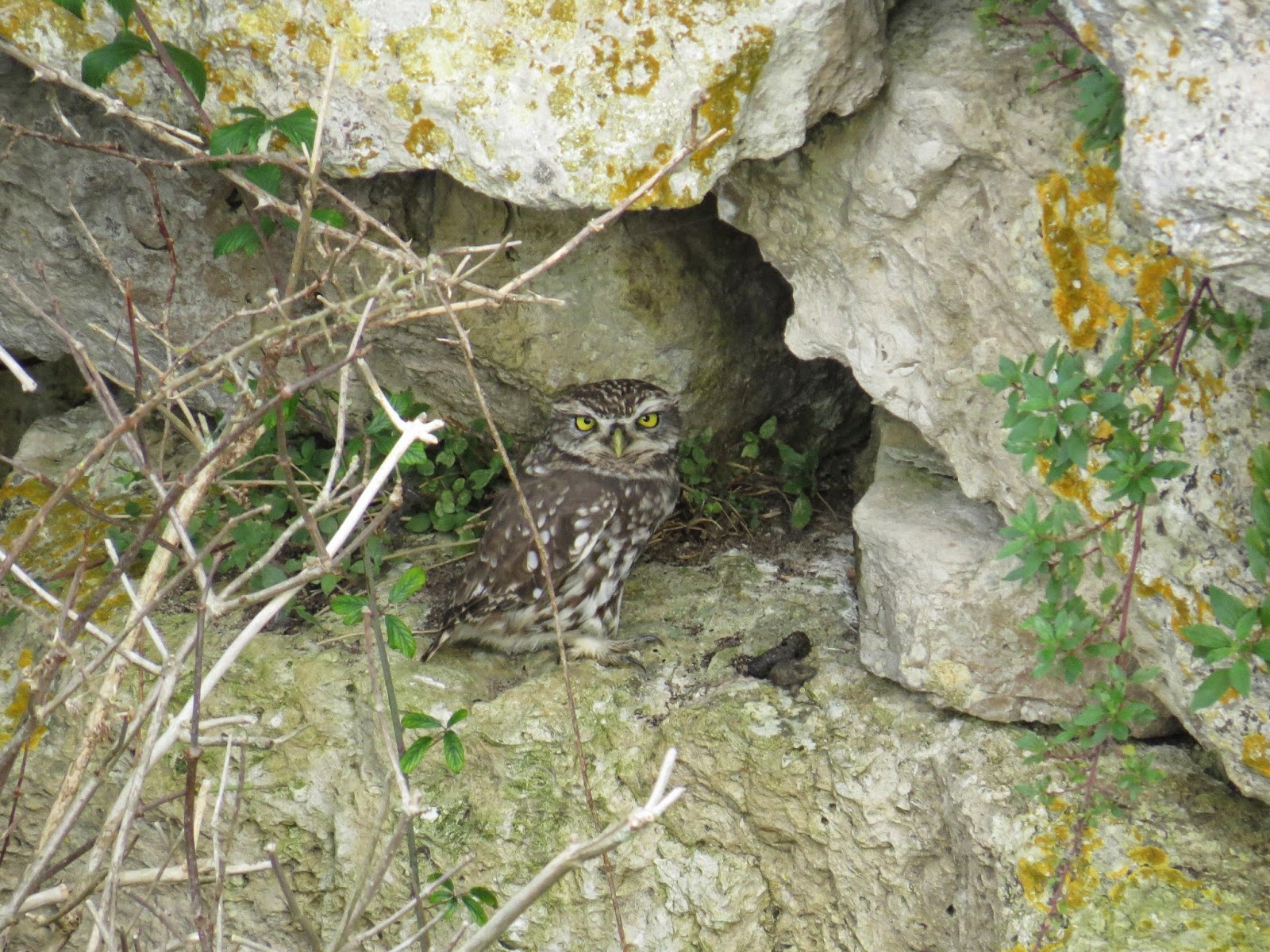On arrival at the observatory, we found a large crowd of birders searching for a Pallas's Leaf Warbler that had been seen in the garden twenty minutes earlier. It was extremely windy, and consequently I feared that the chances of it reappearing would be very small indeed. After an anxious fifteen-minute-wait, I saw a minute bird briefly appear flying between some bushes in the garden. Its extraordinarily-bright green colouring meant that it was almost certainly the Pallas's, though my view was hardly satisfactory. Thankfully, less than a minute later, it appeared much closer (literally two metres away), rapidly moving through a thick bush. It was a truly awesome sight- this 9cm-long bright little jewel of a bird that had travelled all the way from Siberia was really one of my favourite sightings of all time. It was moving far-too-fast for a photograph to be possible, but I really couldn't have cared less. The species has become increasingly common in Britain (over 300 were seen in one year alone), seemingly due to changing migration habits- rather than spend the winter in tropical China, a decent number seem to spend it in western Europe nowadays (perhaps a result of climate change?). I was so glad to have finally broken a terrible run of dipping in recent weeks and it was my first new British bird since May, and what a fantastic way to do it.
Feeling that luck was on our side, we decided to try and end another terrible run- somehow never seeing the Observatory Quarry's resident Little Owls which had somehow escaped me on my very numerous visits to the area. Inevitably, one was showing exceptionally well on a rocky perch that I have checked dozens of times before.
Little Owl, Portland Bill
What an awesome bird! It was very much worth the wait....
At the Bill itself, we hoped to find some Black Redstarts. Sadly, the sheer number of people present presumably resulted in the birds being spooked, though I did find my latest ever Northern Wheatear- my first this year was on the 16th March (229 days ago). Other than that, the usual assortment of 'Bill' birds were present, including Rock Pipits and a Raven.
We then headed to Radipole Lake RSPB, via Ferrybridge. At Ferrybridge, we were unable to locate the Black Brant among approximately 1000 Brent Geese (most Dark-bellied Brants).
A small number of the Brent Geese at Ferrybridge
Besides the Geese, all I could find was a single Common Gull among the more regular gull species and a small number of Dunlin and Ringed Plover.
Moving on to Radipole, we found a large number of Mediterranean Gulls roosting in the car park:
Mediterranean Gull, Radipole
In front of the visitor centre was a large number of ducks, almost all of which were Mallard and Tufted Duck, though a single Shelduck and several Teal were also present. Somehow, it took me some time to find the regular Hooded Merganser, despite it being right in front of my eyes. The true origin of this controversial bird will never be known, but personally I believe the circumstances of its arrival in Dorset strongly suggest that it is a wild bird and consequently I count it as such.
Hooded Merganser, Radipole Lake
Finally, my target bird appeared:
Long-tailed Duck, Radipole Lake
This was second ever sighting of this species usually only found at sea, after I saw two together at Abbotsbury Swannery in 2012. As the picture with the Coot shows, it really is a small beast and was being bullied by seemingly every other bird sat on the water. It really was a great experience to see this species so fantastically close.
No other birds of great interest were seen around the reserve, our search for a Yellow-browed Warbler along the Buddleia Loop was unsuccessful, with only a Chiffchaff seen.
Mute Swan, Radipole Lake
Earlier in the week, I found a Peregrine Falcon and Merlin at Hilfield Hill and I had a very brief view of a Yellow-browed Warbler at Durlston Country Park- one of two Siberian warbler species seen in the week! We had also ventured all the way to Kent's Isle of Sheppey in search of my bogey bird- the Long-eared Owl. It had, unbelievably, disappeared overnight, after two weeks of roosting in the same tree. It really was a long drive home! The best birds seen were a Pink-footed Goose, approximately 20 Marsh Harriers, four Barn Owls and two Corn Buntings. It didn't really make up for my sixth dipping of the Long-eared Owl. One day hopefully.....









No comments:
Post a Comment